Why Travelers Should Visit Great Britain for the Food
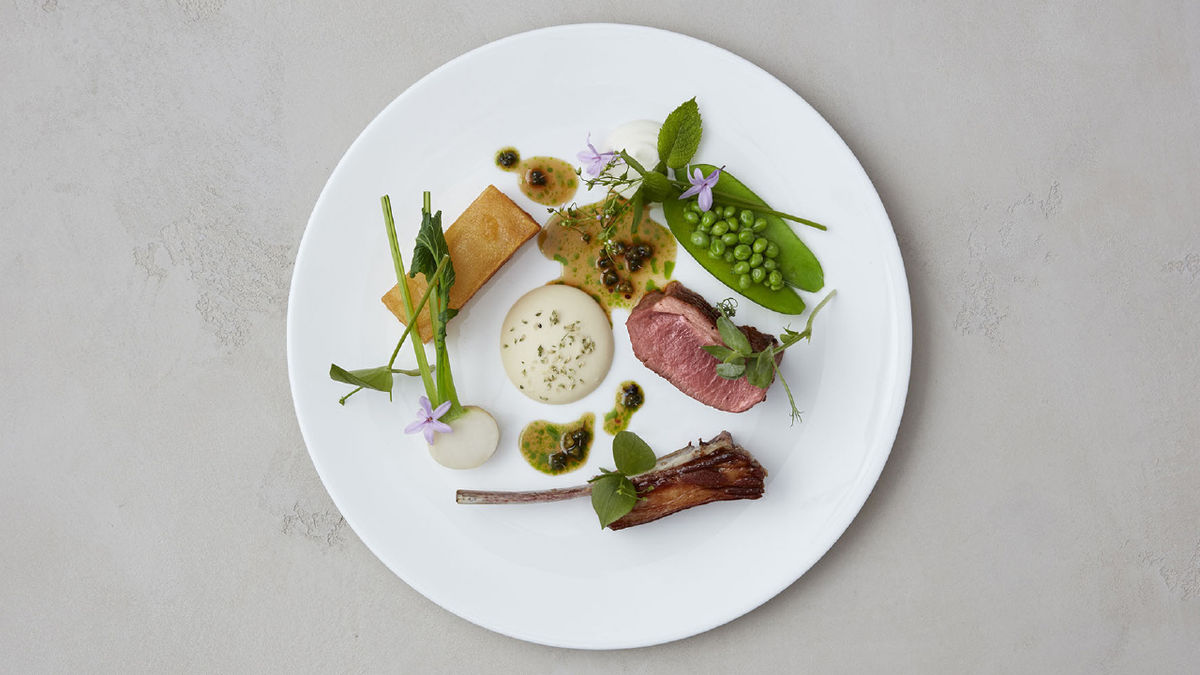
The aroma was intoxicating — it was salty, spicy, garlicky and tangy. There was the unmistakable scent of pork belly, too.
My stomach growled in anticipation.
Earlier in the evening, I had suggested to my friend that we forgo a typical three-course meal at one restaurant for a progressive dinner instead. We would wander at random into the first spot for an appetizer, then let suggestions from strangers dictate the rest of our dining journey.
But as soon as we screeched to a halt in front of Phranakhon Thai Tapas, it was game over. Hours went by, and a feast of small plates dwindled before us: a beef panang curry, deliciously thick in consistency; duck spring rolls that we gleefully dunked in sweet hoisin sauce; and pork belly that had been crisped to perfection.
No, we weren’t in the frenetic foodie megalopolis of Bangkok. Rather, we were some 6,000 miles away in York, an ancient city in North Yorkshire, England, that’s known for its Roman roots, its nickname as “The Viking Capital of England” and its savory Yorkshire pudding — a far cry from the plate of spicy fish cakes drizzled with sweet chili in front of us.
However, the city, much like others across Great Britain, is experiencing a thrilling culinary revolution. Travelers are realizing there’s more to the region than fish and chips, pie and mash and Sunday roast. Sure, those are delicious — and should be consumed at least once while across the pond — but the following diverse destinations have stepped up their repertoire of international influences, local ingredients and more.
For Historical Charm: York and Malton, Yorkshire, England
York is saturated with history, and the 13th-century walls enclosing the city are proof. Travelers have long flocked there for attractions including the interactive Jorvik Viking Centre, the award-winning National Railway Museum and the breathtaking York Minister, which is one of the largest medieval cathedrals in northern Europe.
Today, it’s also quickly becoming a destination for gourmands. The number of epicurean experiences have exploded here in the last few years, according to Sally Greenaway, former head of Visit York.
“We are proud to be serving traditional Yorkshire food as well as a variety of cuisines: Thai, North African, Indian, Korean — you name it,” she said. “Street food especially has seen a boom, diversifying York’s food scene, but restaurants are not in any way behind.”
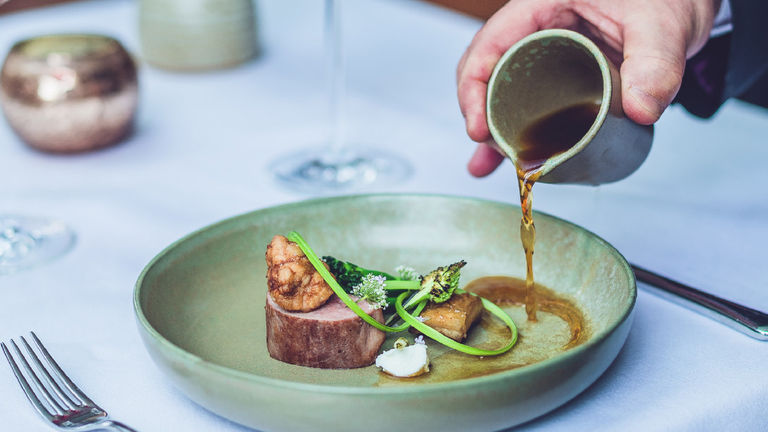
Credit: 2018 Hudsons by Craig Atchinson
Indeed, in York’s outdoor Shambles Market, hungry travelers will find a slew of stalls peddling street food that’s beloved by locals and visitors alike. (Fun fact: The Shambles is said to be the inspiration behind the numinous Diagon Alley in the “Harry Potter” series.) Vendors of note include Souvlaki, known for its unforgettable gyros, and Los Moros, frequented for delicately spiced Moroccan falafel. The two food stands rank No. 1 and 2, respectively, on TripAdvisor’s list of top restaurants in York.
Tablecloths are almost a thing of the past; many chefs are opting for a more natural approach to cooking.
And while street food may be having a serious moment in York, the city isn’t lacking in fine dining options. At the recently renovated five-star Grand Hotel, chef Craig Atchinson skillfully commands the kitchen at Hudsons by Craig Atchinson and The Rise Restaurant, Terrace & Bar. Hudsons, which has three AA rosettes (a U.K.-exclusive restaurant accolade), is decidedly more upscale, featuring dinner-only multicourse tasting menus (The Rise is a la carte), but both restaurants pack a punch in flavor and presentation.
They’re also far from the grandiose affairs previously rampant in fine dining throughout Britain, Atchinson says.
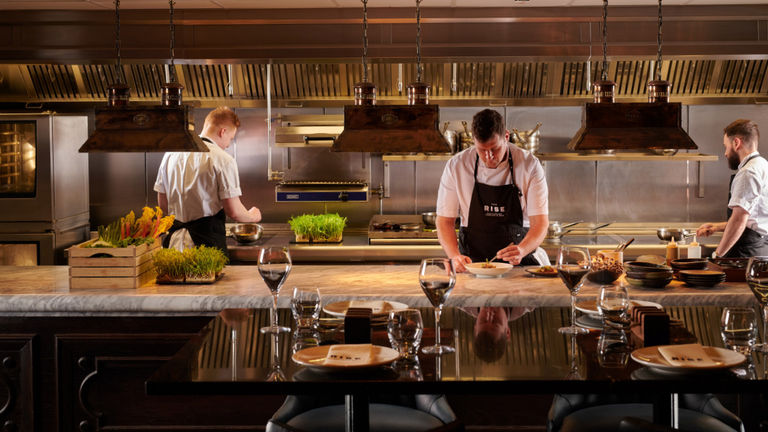
Credit: 2018 The Rise
“Most restaurants have now broken down the pretentious barriers, making the experience more accessible to a wider audience,” he said. “Tablecloths are almost a thing of the past; many chefs are opting for a more natural approach to cooking. This is even reflective in the style of plates that chefs use for their dishes — you see more chefs at the potter’s wheel than flicking though crockery brochures.”
A 25-minute train ride from York, the town of Malton is about 10 years deep in its pursuit of gastronomic success and fame. At the helm is Tom Naylor-Leyland, founder and director of Malton Food Lovers Festival, who has actively championed the once-sleepy destination’s rebirth into the thriving “foodie capital of Yorkshire.” (Naylor-Leyland’s family has partially owned Malton since 1713.)
During my March visit, Naylor-Leyland led an abridged version of the Malton Artisan Food Tour. The first stop was Talbot Yard Food Court, a converted coaching yard with red-brick storefronts, including a coffee shop; an ice-cream parlor (with vegan options); and an artisanal macaron and chocolate boutique owned by Florian Poirot, an award-winning French pastry chef.

Credit: 2018 Valerie Chen
As we sampled a flaky spinach-and-chickpea roll at the yard’s Bluebird Bakery, Naylor-Leyland said he had realized the bulk of the town’s produce was sent away to London, rather than celebrated locally. Two annual food festivals, regular monthly markets, the delightful Malton Cookery School (where we learned how to make a delectable lemon-cured halibut and a tarte a la russe pastry) and dozens of new food and drink businesses later, his revelation has evolved into a culinary revolution. And the proof is in the pudding: One-thousand people visited the Malton Food Lovers Festival in its inaugural year. By its 10th anniversary in May, that number had grown to 30,000.
“The idea was simple,” Naylor-Leyland said. “We should celebrate Yorkshire food in Yorkshire.”
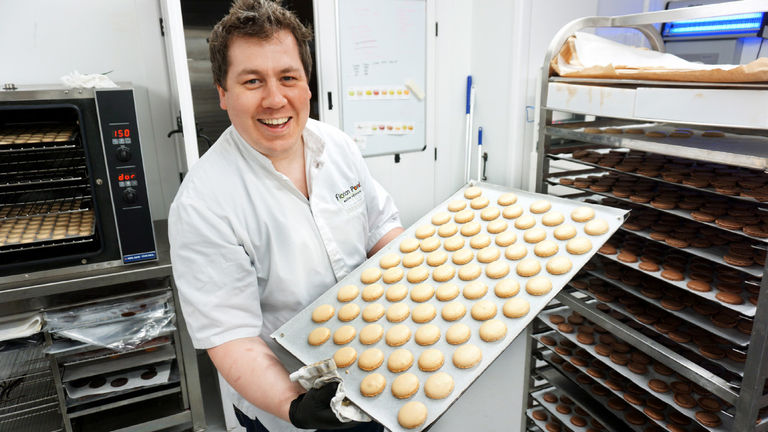
Credit: 2018 Valerie Chen
For Natural Beauty: Wales
Though Wales is small in comparison to nearby England, it has become a foodie force in its own right. A maritime climate paired with a topography of mountains, rolling hills, river valleys and coastlines has resulted in excellent Welsh produce and sustainable food experiences.
“We have our own culinary heritage: a cuisine that is based on local, seasonal, nutritious and simple recipes,” said Sian Roberts, director of Loving Welsh Food, which offers food tours and cooking workshops in Cardiff and Vale of Glamorgan.
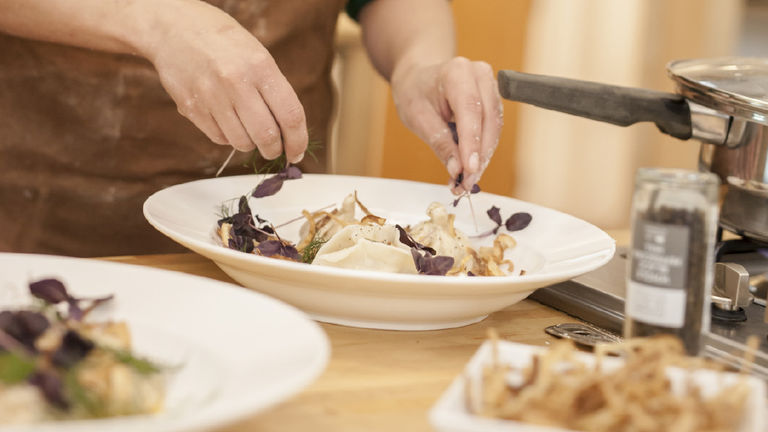
Credit: 2018 Abergavenny Food Festival
At the Michelin-starred, four AA rosette eatery The Whitebrook Restaurant With Rooms, 80 percent of ingredients used are found within a 12-mile radius of the Wye Valley establishment. A forager is on staff, gathering herbs and plants from surrounding forests, estuaries and fields almost 365 days per year, and a flourishing on-site garden boasts everything from five types of pumpkin to four types of beetroot.
“When you source well, the quality of the produce is so much better and, naturally, this has an impact on the taste and flavor of the dish,” said Chris Harrod, chef and owner of The Whitebrook Restaurant.
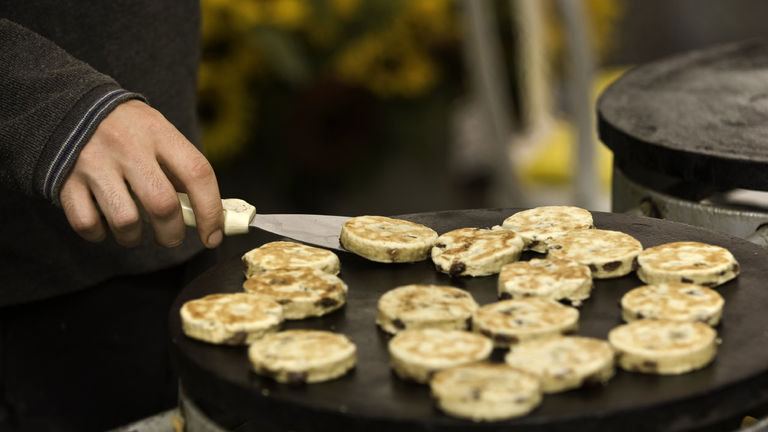
Credit: 2018 Visit Wales
Simon Coe agrees. The head chef at Blas Restaurant at Twr y Felin Hotel in St Davids notes that people expect to know the origin of their food and want it to be fresh. So, he uses seafood caught daily from the nearby sea, meat from neighboring farms and organic cheese from producers that are within walking distance of the restaurant.
“As a small country, nothing is mass-produced,” Coe said. “In most cases, you can really trace the journey of the ingredient from farm to fork.”
Clients can try their hand at foraging with Wild About Pembrokeshire, a local operator that offers such activities by the sea. I met co-founders Julia Horton-Mansfield and John Mansfield in St Davids to learn about one of the ocean’s most prolific and nourishing bounties: seaweed.
The two eat the stuff every day. In the parking lot of Whitesands Bay, a beach situated on the St Davids peninsula, I leaned against the trunk of their car, sniffing and tasting different types of dried seaweed. They explained that “dulce” can be fried for a crispier texture; “laver” is a key component for laver bread, a Welsh specialty; and nutty-smelling “gutweed” is perfect for sprinkling on salads or even as an ice cream flavor.
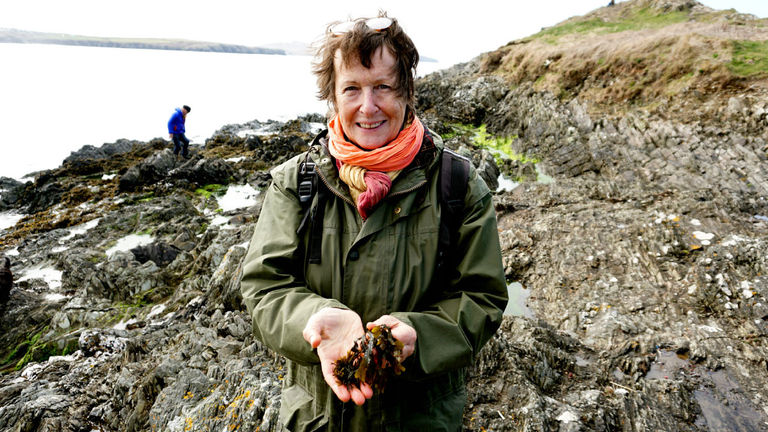
Credit: 2018 Valerie Chen
And when it was time to gather a fresh assortment of the saltwater plants, their aptly named dog, Seaweed — his scraggly black fur resembles a briny tangle of algae — scampered ahead, leading us down to the beach and over damp outcrops full of Mother Nature’s bounty. (Wild About Pembrokeshire tours also can include cooking sea vegetables by beach bonfire, weather permitting.)
For City Life: London
The beating heart of Great Britain’s foodie movement is, of course, London. Multicultural, dynamic and exciting, the global city fosters innovation and risk-taking — particularly regarding food.
“Creativity is enormous in this city and gives people a sense of freedom to do whatever they are passionate about, from food trucks to secret supper clubs and hidden restaurants,” said Nicole Monaco, London operations manager for Eating Europe, which offers three local food experiences in the city.
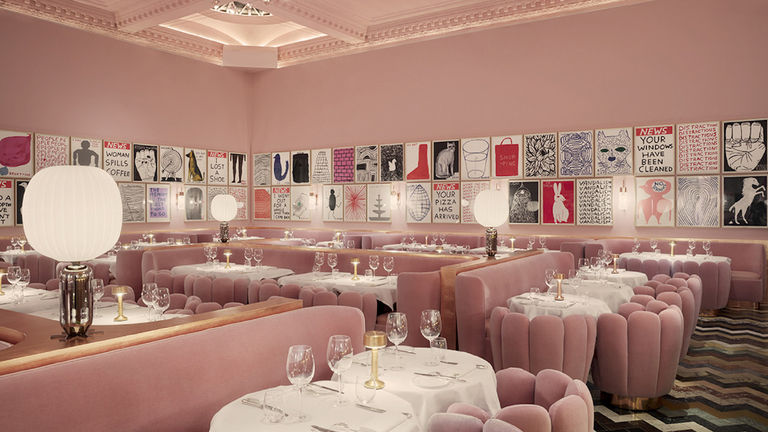
Credit: 2018 Sketch London
In-the-know travelers are smitten with Sketch in the Mayfair area, which has become Instagram-famous for its millennial-pink Gallery room, zany egg-shaped toilet pods and adorable afternoon tea fare that features egg-truffle finger sandwiches and jam made from organic rhubarb and hibiscus. Also buzzing is the newly opened Hide restaurant from Ollie Dabbous, who is said to be one of Britain’s most talented chefs. Hide spans three floors — called “Above,” “Ground” and “Below” — and each has its own distinct experience. Carefully crafted dishes here are not only tasty but also incredibly photogenic: Fantastical-looking candy stripe beets, for example, are sprinkled with marigold flowers, pistachios and oranges.
But this zest for gastronomic ingenuity hasn’t always been present in London. Japanese celebrity chef and restaurateur Nobu Matsuhisa says that when he first opened Nobu in the city’s COMO Metropolitan London hotel in 1997, everyone thought he was crazy.
“They said London had terrible food, and no one would be interested eating at a great restaurant,” he said. “Now, it’s one of the best cities in the world for food. The U.S. perception of London’s culinary scene is slowly but surely changing.”
Matsuhisa’s newest spot, Nobu Hotel London Shoreditch, is located in the city’s East End neighborhood, which has also undergone a transformation. Formerly notorious as a poverty-stricken area of London, it now pulses with a range of hot restaurants, nightlife, shops and more.
As our lives get faster and more digital, eating together at a table remains the best way to connect with friends and family. So, instead of saying ‘you are what you eat,’ we should say ‘we are who we eat with.
Curious to discover this less touristy part of London, I joined Eating Europe’s four-hour East End tour, which starts in Shoreditch’s Old Spitalfields Market, then makes its way around the up-and-coming neighborhood. Though we tried yummy British classics such as bread-and-butter pudding as well as fish and chips, the highlight was spicy chicken tikka masala (though some may argue that this is also a British staple) at a restaurant situated on Brick Lane. The street is considered the nucleus of the city’s Indian and Bangladeshi community (and it’s where roughly 50 curry restaurants come alive once the pubs shut their doors).
Monaco says British food has come a long way from its former descriptors of “boring” and “bland.”
“I definitely think we have to thank our neighboring countries and colonies for their food cultures, as well as our creative chefs for marrying these ingredients and cultures together to create ‘British fusion,’” she said.
Over in London’s West End, Leicester Square Kitchen (set within Radisson Blu Edwardian Hampshire) merges contemporary Mexican and Peruvian flavors. Outstanding tapas-style dishes and drinks include piquant sea bass ceviche garnished with avocado, white corn and red onion; tiger prawns and papaya-habanero salsa in soft tacos; and a refreshing pisco sour prepared with egg white, bitters and lime.
Leicester Square Kitchen has already shot to No. 98 on TripAdvisor — out of more than 18,000 London restaurants (as of press time) — and, quite frankly, it was the best meal I ate while in Britain.
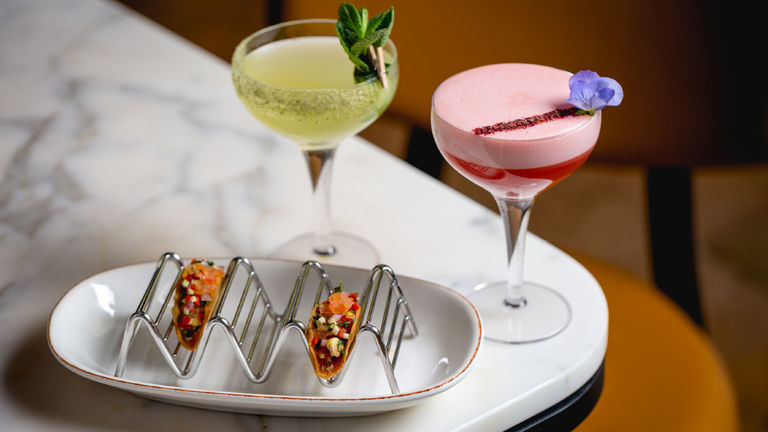
Credit: 2018 Edwardian Hotels London
Amir Jati, service excellence director of Edwardian Hotels London, says there has also been an evolution in the way people eat — hence the rise of tapas-style dishes across Britain and at Leicester Square Kitchen.
“As our lives get faster and more digital, eating together at a table remains the best way to connect with friends and family,” Jati said. “So, instead of saying ‘you are what you eat,’ we should say ‘we are who we eat with.”
link






